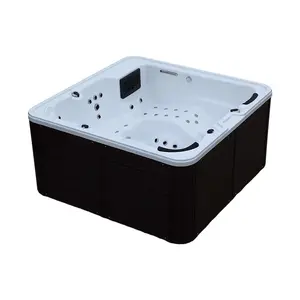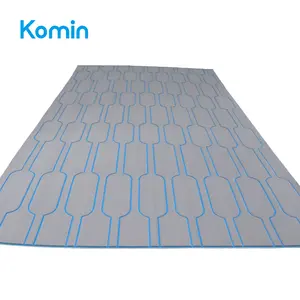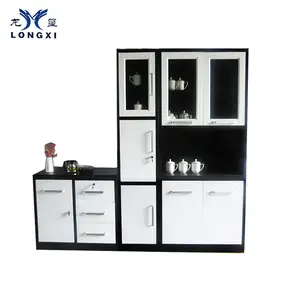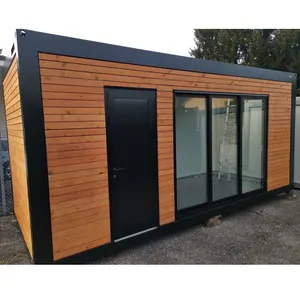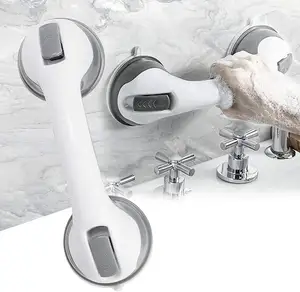Popular in your industry






































































Top categories
About hvac floor register
Introduction
In the quest for a comfortable and energy-efficient home, one often overlooked component is the HVAC floor register. These seemingly simple devices play a crucial role in distributing treated air throughout your home, enhancing the efficiency of your heating and cooling systems. This article delves into the world of HVAC floor registers, exploring their types, materials, and the role they play in your home's comfort and aesthetics. We'll also guide you on how to choose the right register for your home, how to install and maintain them, and how to maximize their efficiency for optimal comfort.
Understanding HVAC Floor Registers
HVAC floor registers, commonly found in homes with a forced air heating system, are crucial for distributing treated air throughout the rooms. These registers are essentially metal plates with openings that allow the passage of hot or cool air. Traditionally, these registers were made from metal to withstand the continuous flow of warm air. However, modern options include treated plastic and specially treated wood, expanding design possibilities.
Types of HVAC Floor Registers
Registers, one type of HVAC floor vents, control air flow into a room from heating and cooling systems. They are available in various materials including wood, plastic, and different metals, each offering unique aesthetics and durability. Another type, grilles, are vents through which air is pulled out of a room for circulation back to the central heating or cooling unit. Registers often feature a closable or collapsible damper that enables total control of the air flow, enhancing the efficiency of your HVAC system.
Metal Registers
For homes with HVAC units, floor registers are integral. These are metal or non-metal plates with holes for the hot or cold air to blow through. It's best to choose a metal one for your home. Heated plastic can be a safety concern, hence metal registers are preferred. Cast iron decorative floor registers add value to your home in many ways. A thick faceplate ensures higher durability and strength. They are available in various designs and colors, allowing you to choose one that matches your room's aesthetics.
Plastic Registers
Plastic HVAC floor registers have several advantages over their metal counterparts. They are weather-resistant and strong, thanks to modern plastic resins like polypropylene that offer significant UV protection. They are also available in various sizes and shapes, providing aesthetic appeal. Plastic registers are cost-effective, easy to manufacture, and less likely to be damaged during shipment or installation. They are leak-proof, molded in one piece, preventing water penetration. They come in different colors to match your home's palette, and their safety is enhanced by smooth rounded edges and lightweight design.
Wooden Registers
Wooden vent covers, often made from hardwoods like oak, maple, and cherry, offer a custom, true-to-home feel. They can be painted to match your color palette or design theme, enhancing the aesthetic appeal of your home. However, they are not suitable for floor vents. High-density machine board (HDM) is another option for decorative vent covers, providing intricate design and customizable detailing. It's ready for primer and paint, but not suitable for floor vent covers. Overall, wooden vent covers are a great investment, enhancing the beauty and personalized feel of your home.
Choosing the Right HVAC Floor Register for Your Home
When choosing the right HVAC floor register for your home, consider factors like style, energy-efficiency, and more. A wide range of registers are available to match your home’s decor, so you don’t have to make additional changes. Registers feature a closable or collapsible damper that enables total control of the air flow. From metal to plastic and wooden options, you can find the perfect fit for your needs. Remember, the right upgrade can improve air flow and the overall appearance of any room.
Size and Fit
Choosing the right size for your HVAC floor register is crucial. Standard register sizes range from 2-1/4"x10" up to 8"x14", with common sizes being 4"x10", 4"x12", 6"x10", and 6"x12". Smaller sizes are typically found in areas like laundry rooms, bathrooms, and hallways. To measure your register properly, remove the existing register and measure the length and width of the air duct opening. For example, if the duct measures 4"x10", then a 4"x10" register is what you’ll need.
Material and Durability
When it comes to the material and durability of HVAC floor registers, there are several options available on Alibaba. Brands on Alibaba offer registers made from sturdy steel, ensuring longevity and resistance to wear. For a lighter option, there are also plastic registers, which are resistant to rust and easy to clean. For those seeking a more luxurious look, there are faux wood registers, combining the elegance of wood with the durability of plastic. Regardless of the material, these registers are designed to withstand the rigors of everyday use.
Aesthetics and Design
Adorn a rather simple and ordinary spot in your home with something spectacular. Most vent covers often sacrifice style and design in favor of functionality. However, our extensive inventory of fully customizable decorative register and vent covers made out of aluminum, metal, wood, plaster, resin, and stone can add charm and decorative appeal to any room. Matching vent grilles to your specific style has never been easier. If you have found yourself unimpressed with the vents currently in your home, it’s time to consider what this commonly overlooked detail can add to your overall style and décor.
Installation and Maintenance of HVAC Floor Registers
Installing a HVAC floor register involves several steps. First, measure the register opening accurately to ensure you purchase the correct size. Remove the old register if necessary, then prepare the floor opening for the new register. Install the mounting frame for support and stability, then connect the ductwork to ensure efficient heating and cooling. Secure the new register in place and test for proper air flow. Regular maintenance, including cleaning and checking for secure connections, ensures the register functions effectively and adds elegance to your home.
Installing Your HVAC Floor Register
Installing your HVAC floor register can be a bit tricky, especially when dealing with tight spaces. The key is to straighten the boot as much as possible and secure it with screws into the flooring or subfloor. When reinserting the register, stick it in at a 45-degree angle, then slide it sideways as you push it down. This method ensures a snug fit. However, it's crucial to measure the opening in the metal duct and buy a register that fits that opening. If the register's size is larger than the duct opening, it won't work.
Maintaining Your HVAC Floor Register
Maintaining your HVAC floor register involves regular cleaning to prevent the buildup of stubborn dirt and dust. Over time, grime can accumulate in the cracks and crevices of your registers, making them difficult to clean. However, you can effectively clean your HVAC floor registers using manual methods or even a dishwasher, ensuring they function optimally and contribute to the overall efficiency of your HVAC system.
Maximizing Efficiency and Comfort with HVAC Floor Registers
Floor registers are ideal for efficient heating, especially in climates that require more heating than cooling. Warm air naturally rises from the floor, heating the room effectively. However, placement is crucial. Commonly, floor registers are placed under windows or near an interior wall. However, improper placement can limit airflow and cause a pressure imbalance in your cooling and heating system. Also, floor registers tend to collect debris and dust, requiring regular cleaning to maintain efficiency and comfort.
Proper Placement
Proper placement of HVAC floor registers is crucial for efficient heating. Ideally, they are placed under windows to mix the warm air they deliver with the cool air from the windows. Another common location is near an interior wall. However, in small rooms, floor registers can limit furniture arrangement. Also, they tend to collect dust and debris, and are vulnerable to blockage, especially in homes with small children.
Balancing Airflow
Balancing airflow in your HVAC system is crucial for maintaining a consistent temperature throughout your home. This involves adjusting each duct or vent so that all rooms reach the same temperature simultaneously. You can do this by closing the vents or dampers in some rooms while opening others. It's important to note that even changes like the addition or removal of furniture can affect airflow. If your system is out of balance, you may notice significant temperature changes from room to room, indicating that these spaces are receiving inappropriate amounts of conditioned air.
Regular Cleaning
Regular cleaning of your HVAC floor registers is crucial to maintain good indoor air quality. Ideally, you should clean your air vent covers anytime you notice significant dust or dirt buildup—typically every month or so. This will help minimize the need for a deeper clean by avoiding a significant buildup of dust, grime, and dander. You should plan to do a deeper cleaning 1–2 times a year. Adding it to your spring and fall home maintenance tasks will serve as a good reminder.
Conclusion
In conclusion, HVAC floor registers are more than just functional components of your heating and cooling system. They are a blend of functionality, aesthetics, and energy efficiency. From metal to plastic and wooden options, there's a perfect fit for every home's style and needs. The right choice and placement can significantly improve air flow and the overall appearance of any room. Regular maintenance and cleaning are crucial to ensure their optimal performance and longevity. By understanding and implementing the insights shared in this guide, you can revolutionize your home comfort and take a step towards a more energy-efficient living environment.
